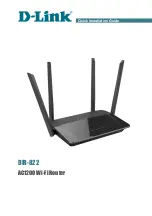
169
-----------------------------
Level-1 IPv4 Forwarding Table
-----------------------------
IPv4 Destination IntCost ExtCost ExitInterface NextHop Flags
-------------------------------------------------------------------------------
10.1.1.0/24 10 NULL GE1/0 Direct D/L/-
10.1.2.0/24 10 NULL GE3/0 Direct D/L/-
192.168.0.0/24 10 NULL GE2/0 Direct D/L/-
Flags: D-Direct, R-Added to Rib, L-Advertised in LSPs, U-Up/Down Bit Set
Level-2 IPv4 Forwarding Table
-----------------------------
IPv4 Destination IntCost ExtCost ExitInterface NextHop Flags
-------------------------------------------------------------------------------
10.1.1.0/24 10 NULL D/L/-
10.1.2.0/24 10 NULL D/L/-
192.168.0.0/24 10 NULL D/L/-
10.1.4.0/24 10 NULL GE2/0 192.168.0.2 R/L/-
10.1.5.0/24 20 NULL GE2/0 192.168.0.2 R/L/-
10.1.6.0/24 20 NULL GE2/0 192.168.0.2 R/L/-
Flags: D-Direct, R-Added to Rib, L-Advertised in LSPs, U-Up/Down Bit Set
IS-IS authentication configuration example
Network requirements
As shown in
Figure 43
, Router A, Router B, Router C, and Router D reside in the same IS-IS routing
domain.
Router A, Router B, and Router C belong to Area 10, and Router D belongs to Area 20.
Configure neighbor relationship authentication between neighbors. Configure area authentication in
Area 10 to prevent untrusted routes from entering into the area. Configure routing domain authentication
on Router C and Router D to prevent untrusted routes from entering the routing domain.
















































